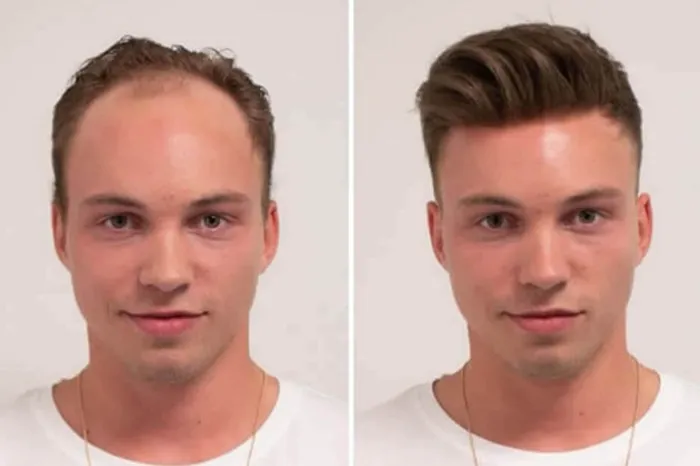Hair loss can significantly impact one’s self-confidence and overall appearance. Fortunately, advancements in hair replacement technology offer several effective solutions to restore hair density and improve hair health. This article will provide a detailed overview of the best hair replacement options, including their success rates, techniques, and factors influencing their effectiveness.
Understanding Hair Replacement Options
Hair Transplant Surgery
Hair transplant surgery involves relocating hair follicles from a donor area (usually the back or sides of the head) to the recipient area where hair loss has occurred. The two primary methods are Follicular Unit Transplantation (FUT) and Follicular Unit Extraction (FUE).
Success Rates
FUT: This method has a success rate of approximately 90-95%, making it highly effective for restoring hair density. FUT involves taking a strip of scalp and dividing it into small units, which are then transplanted to the recipient area.
FUE: FUE has a success rate of around 80-95%, making it equally effective. This method involves directly removing individual hair follicles from the scalp, resulting in minimal scarring and faster recovery.
Platelet-Rich Plasma (PRP) Therapy
PRP therapy involves injecting platelet-rich plasma, derived from the patient’s own blood, into the scalp to stimulate hair growth. This non-invasive treatment can be particularly effective for early-stage hair loss.
Success Rates
Studies indicate that PRP therapy can yield significant improvements in hair density and thickness, with success rates often exceeding 80%. PRP is particularly effective when used in combination with other treatments like minoxidil or finasteride.
Scalp Micropigmentation (SMP)
SMP is a non-surgical cosmetic procedure that involves tattooing the scalp to create the appearance of hair follicles. This method is ideal for those who prefer a non-invasive approach to hair restoration.
Success Rates
SMP can provide immediate and natural-looking results, with high patient satisfaction rates. While it does not involve actual hair growth, SMP can significantly improve the appearance of a fuller head of hair.
Low-Level Laser Therapy (LLLT)
LLLT uses light energy to stimulate hair follicles, promoting hair growth in thinning areas. This non-invasive treatment can be performed using laser combs, caps, or in-office devices.
Success Rates
LLLT has been shown to be effective in promoting hair growth, with success rates ranging from 70-85%. Consistent use of LLLT over several months can lead to noticeable improvements in hair density and thickness.
Factors to Consider When Choosing a Hair Replacement Method
Cost
Cost is an important factor to consider when choosing a hair replacement method. Surgical hair transplant procedures can be expensive, especially if multiple sessions are required. Wigs and
hairpieces also vary in price, with human hair wigs being more costly. Medications for hair loss, such as minoxidil and finasteride, may require long – term use, which can add up over time.
Effectiveness
The effectiveness of a hair replacement method depends on various factors, including the cause and extent of hair loss. Surgical hair transplant procedures can provide long – term, natural – looking results, but they may not be suitable for everyone. Non – surgical options like wigs and medications can be effective in some cases, but they may not provide the same level of permanence as surgery.
Recovery Time
If you choose a surgical hair replacement method, recovery time is an important consideration. FUT generally requires a longer recovery period compared to FUE and DHI. Non – surgical options like wigs and medications do not require a recovery period, as they can be used immediately.
Lifestyle and Preferences
Your lifestyle and personal preferences also play a role in choosing the best hair replacement method. If you lead an active lifestyle, a surgical option may be more suitable as it requires less maintenance. On the other hand, if you prefer to change your hair style frequently, wigs or hairpieces may be a better choice.
Conclusion
Hair replacement options offer a range of effective solutions for addressing hair loss, from surgical methods like FUT and FUE to non-invasive treatments like PRP therapy, SMP, and LLLT. Each method has its own set of advantages and success rates, making it important for patients to consult with a qualified specialist to determine the best option for their specific needs. By understanding the factors influencing success and following proper aftercare instructions, patients can achieve significant improvements in hair density and overall appearance.
Related topics:
- What Is the Best Hair Replacement Methods
- What Is the Best Hair Replacement Method?
- Which Hair Transplant is Best?


